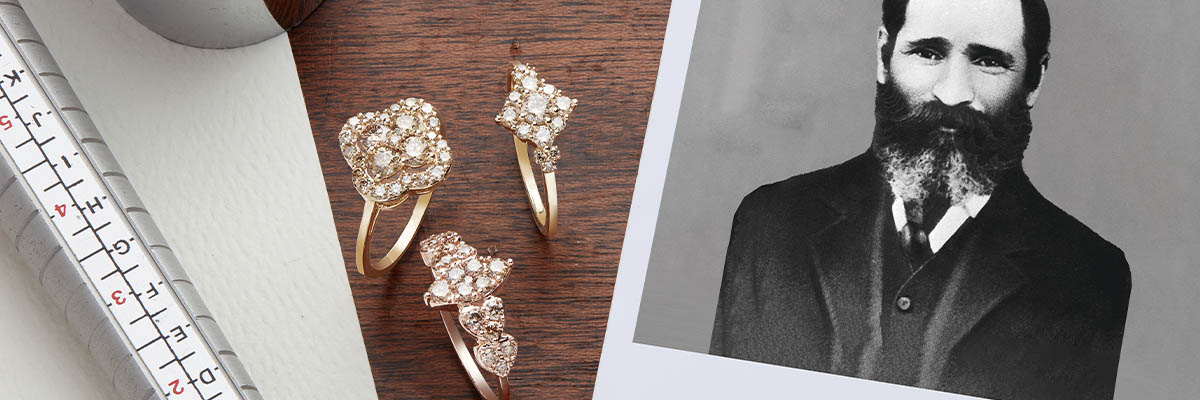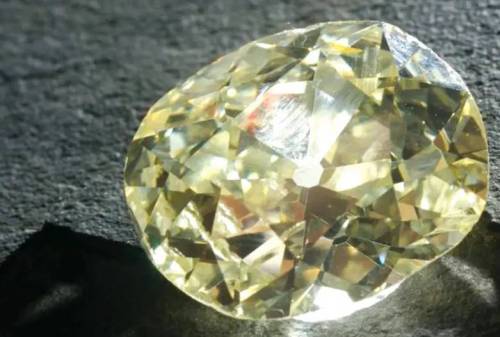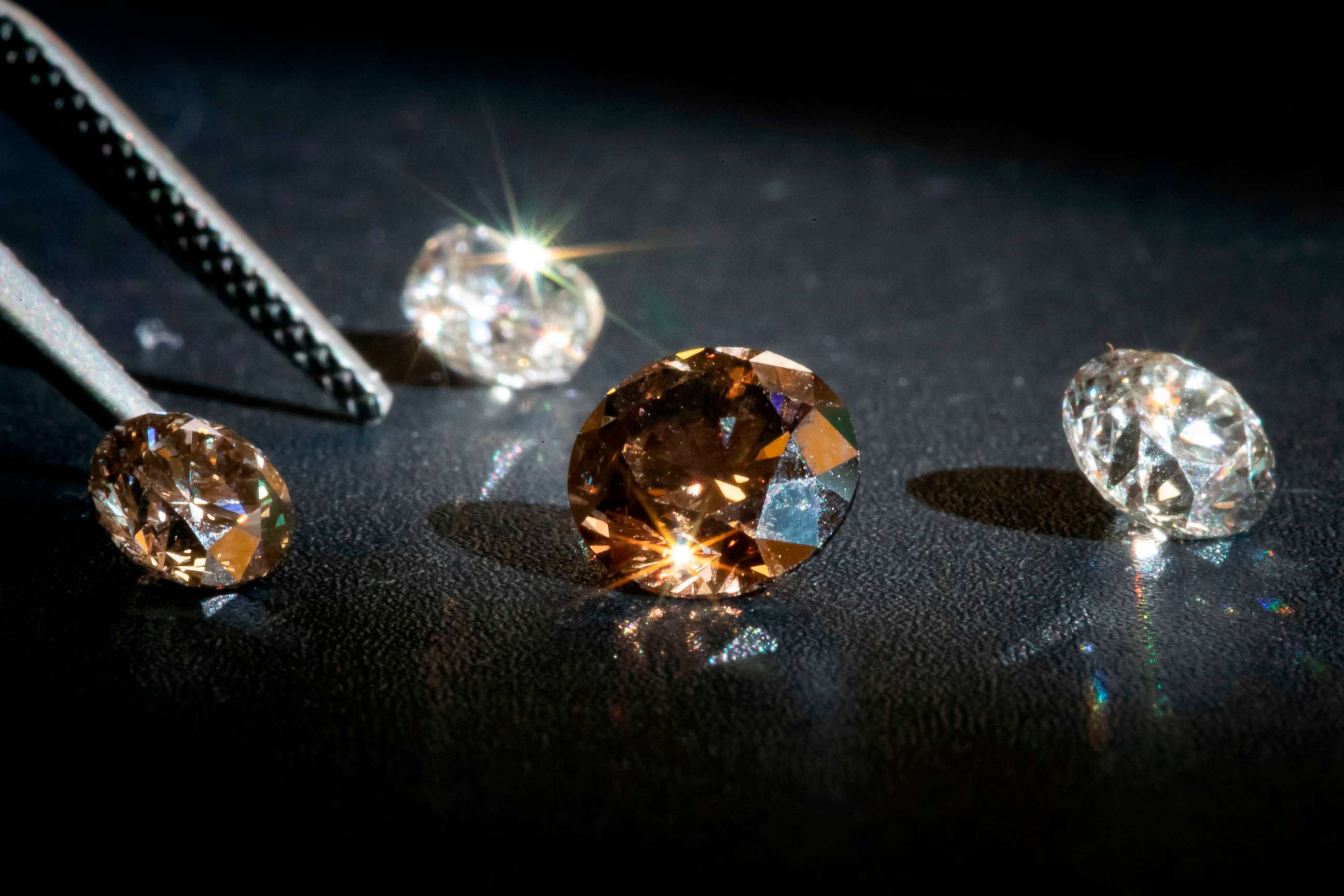
Discovery of Diamonds – Diamonds were first discovered in India around 4,000 years ago, particularly in riverbeds of the Krishna and Godavari rivers. Referred to as ‘vajra’ in ancient Sanskrit texts, meaning lightning, diamonds were esteemed for their unmatched hardness and brilliance. They served as protective talismans and symbols of high social status.
Table of Contents
Discovery of Diamonds in South Africa
In 1867, a young boy named Erasmus Jacobs. Who is Erasmus Jacob? You can find it here. Back to the Article, found a transparent stone along the Orange River in South Africa. This stone was later identified as a diamond, sparking the ‘Diamond Rush’ and leading to the development of the Kimberley mining industry. This discovery also marked the beginning of De Beers’ dominance in the global diamond industry.
who is Erasmus Jacobs?

Erasmus Stephanus Jacobs was born around 1851 in Hopetown, South Africa. As the son of Boer farmers, Erasmus’s life revolved around agriculture and nature. However, fate led him to a discovery that would alter his life and South Africa’s history.
Discovery of the Diamond on the Orange River
The Moment of Discovery
In 1867, at the age of 15, Erasmus was playing near the Orange River by his home in De Kalk. He found a small, shiny stone and took it home. The stone caught the attention of neighbor Schalk van Niekerk, who suspected it might be a diamond, and he became the first person to discover of diamonds.
Read Also: Top 10 Most Expensive Diamond Rings in 2025 – Prices, History & Buyers
Identification of the Diamond
The stone was examined by several individuals, including John O’Reilly and Lorenzo Boyes. Eventually, it was sent to Dr. William Guybon Atherstone in Grahamstown, who confirmed it was a 21.25-carat diamond. This diamond became known as the “Eureka Diamond”.
Impact of the Eureka Diamond Discovery
Mineral Revolution
The Discovery of Diamonds Eureka triggered the “Kimberley Diamond Rush” and marked the beginning of the Mineral Revolution in South Africa. This led to massive migration and rapid development in the mining industry.
Social and Economic Impact
This Discovery of Diamonds brought significant changes to South Africa’s social and economic structures. The diamond industry grew rapidly, attracting foreign investment and transforming the country’s economic landscape.
Other Interesting Stories
Journey of the Eureka Diamond

After Discovery of Diamonds Eureka Diamond was exhibited in various places, including the 1867 Paris Exhibition.
The Largest Diamond: The Cullinan

On January 25, 1905, is the largest and the first Discovery of Diamonds ever found, the Cullinan, weighing 3,106 carats, was discovered at the Premier Mine in Pretoria, South Africa. The diamond was later cut into several pieces, with the largest becoming part of the British Crown Jewels.
Discovery of the Cullinan Diamond
On January 26, 1905, at the Premier No.2 Mine near Pretoria, South Africa, mine superintendent Frederick Wells discovered a 3,106-carat (621.35 grams) diamond crystal, later named the Cullinan Diamond. It was named after Sir Thomas Cullinan, the mine’s owner.
Journey to the British Monarchy
After its discovery, the diamond was exhibited in London but remained unsold. In 1907, the Transvaal Colony government purchased it and presented it to King Edward VII as a token of loyalty.
Cutting Process by Joseph Asscher
The task of cutting the diamond was entrusted to Joseph Asscher of I.J. Asscher & Co in Amsterdam. The cutting process of the diamond began in February 1908 and took eight months. Asscher prepared the groove for four days; the first steel blade broke, but the second attempt succeeded.
Results of the Cutting: Cullinan I to IX
The cutting yielded nine major diamonds and about 100 smaller ones. The two largest are:
- Cullinan I: Known as the Great Star of Africa, weighing 530.2 carats, set in the British Sovereign’s Sceptre.
- Cullinan II: Weighing 317.4 carats, set in the Imperial State Crown.
The Discovery of Diamonds Type
Diamonds are renowned for their brilliance and durability. However, not all diamonds are the same. Various types of diamonds possess unique characteristics that influence their value, color, and rarity. This article explores lesser-known diamond types, their relevance in society, and the impact of innovations in the diamond industry.
Diamond Classification Based on Chemical Composition
Type Ia
The most common type, comprising about 95% of natural diamonds. Contains nitrogen in clusters, giving a pale yellow color. Example: diamonds from Cape Province, South Africa.
Type Ib
Only about 0.1% of natural diamonds. Nitrogen is dispersed evenly, resulting in vivid yellow or brown colors. Example: canary diamonds.
Type IIa
Extremely rare, comprising 1-2% of natural diamonds. Almost no nitrogen, leading to exceptional clarity. Examples: Cullinan
Rare Colored Diamonds
Red Diamonds
The rarest type of diamond. Resulting from deformation of the crystal structure. Example: Moussaieff Red Diamond.
Blue Diamonds
Contain boron. Famous example: Hope Diamond.
Green Diamonds
Color comes from exposure to natural radiation. Example: Dresden Green Diamond.
Chameleon Diamonds
Have the ability to change color depending on temperature and light. Very rare and unique.
Impact of Innovation in the Diamond Industry
Synthetic Diamonds
Produced through HPHT or CVD processes. More affordable and environmentally friendly.
Treated Diamonds
Natural diamonds that have undergone a process to enhance color or clarity. Opens up access to high-quality diamonds at a more affordable price.
Relevance to Society
Understanding diamond types helps consumers make informed purchasing decisions. Additionally, innovations in synthetic diamond production and natural diamond treatments provide more sustainable and affordable alternatives.
Socio-Economic Impact
The discovery of diamonds has had significant socio-economic impacts. While the diamond industry has created employment opportunities and increased national revenues, it has also led to social and environmental conflicts, particularly in mining regions.
Innovations in Diamond Cutting
The first Discovery of Diamonds cutting techniques began in the 14th century and were initially very primitive. It wasn’t until the 20th century that we were able to cut and shape diamonds with the precision we know today. Even now, the process is still done almost entirely by hand by skilled artisans.
Emergence of Synthetic Diamonds
In recent decades, lab-grown diamonds have emerged as a more affordable and ethical alternative to natural diamonds. However, their sustainability claims are often unclear, especially since many are produced using coal-powered energy. Some companies in the U.S.
Spread to Europe
In the 13th and 14th centuries, Discovery of Diamonds began to appear in European jewelry, especially in Venice, which became the first European diamond trading hub. Initial attempts to polish the natural faces and flaws of diamonds started around 1330. By the end of the 14th century, the diamond trade route extended to Bruges and Paris, and later to Antwerp.
The Spread of Diamonds around The World
Diamonds, symbols of luxury and eternity, have a rich history that mirrors human civilization’s journey. From their initial discovery in India to becoming a global commodity, the spread of diamonds reflects the world’s economic, political, and cultural dynamics.
Origins: India as the Starting Point
Diamonds were first discovered in India around the 4th century BCE. For over a millennium, India remained the world’s sole source of diamonds. These precious stones were traded along the Silk Road, connecting India with China and Europe, becoming symbols of status among nobility and elites.
Expansion to Europe: Middle Ages and Renaissance
According to arhaandiam.com, in the 13th century, diamonds began appearing in Europe, primarily among royalty. Louis IX of France even enacted laws restricting diamond use to the royal family due to their rarity. Venice became Europe’s first diamond-cutting center around 1330.
New Discoveries: Brazil and South Africa
After India’s sources dwindled, Brazil emerged as a major diamond producer in the 18th century. However, the 1866 discovery of diamonds in Kimberley, South Africa, revolutionized the industry, leading to a “diamond rush” and establishing South Africa as the world’s leading diamond producer.
De Beers’ Dominance and Global Monopoly
Cecil Rhodes founded De Beers Consolidated Mines in 1888. By the early 1900s, De Beers controlled about 90% of the world’s rough diamond production, creating a monopoly which persisted for decades.
Source Diversification: Russia, Canada and Australia
In the 20th century, the discovery of diamond mines in Russia, Canada and Australia reduced De Beers’ dominance. These mines expanded the global distribution of diamonds and introduced competition into the industry.
Social and Economic Impacts
The distribution of diamonds has not only impacted the global economy but has also fueled conflict. In some African countries, diamonds have been used to fund civil wars, known as “blood diamonds”. To address this, the Kimberley Process was introduced in 2002 to ensure that traded diamonds are conflict-free.
Innovation and the Future of Diamonds
Technological advances have made it possible to produce synthetic diamonds that are physically identical to natural diamonds. This has opened up new markets and challenged traditional industries, providing consumers with more affordable and ethical alternatives.
Conclusion
The journey of the diamond from ancient India to the global market reflects changes in trade, technology and social consciousness. Understanding the history of the diamond distribution helps us appreciate the value and complexity of this precious stone in a modern context.
Conclusion
The history of Discovery of Diamonds reflects humanity’s enduring quest to seek and cherish nature’s beauty. From ancient India to South Africa, diamonds have symbolized power, wealth, and eternity.


